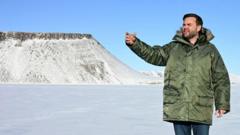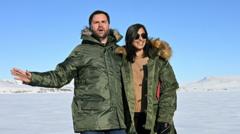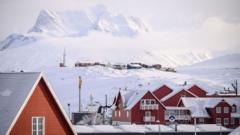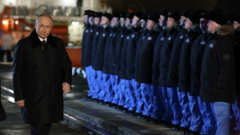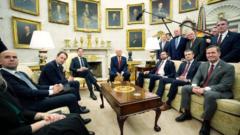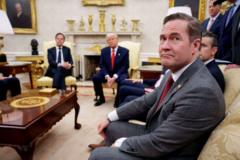Vice President JD Vance's visit to Greenland highlights tensions between the U.S. and the island's sentiments, illustrating the complexities of diplomatic relations.
**JD Vance's Greenland Visit: A Diplomacy in Doubt**

**JD Vance's Greenland Visit: A Diplomacy in Doubt**
Amidst protests and an unwelcoming atmosphere, Vice President JD Vance embarks on a controversial trip to Greenland.
In a politically charged atmosphere, Vice President JD Vance's visit to Greenland is overshadowed by numerous challenges and dissenting local opinions. Scheduled to arrive on Friday, Vance’s trip marks a significant moment as he becomes the highest-ranking American official to set foot on the island territory of Denmark. However, this milestone seems dimmed by the widespread disapproval from Greenlanders who have made their sentiments clear, stating that "he’s not welcome."
This visit follows years of contentious dialogue surrounding Greenland, particularly after former President Donald Trump's controversial interest in purchasing the territory, a move met with fierce rejection from both Greenland's government and its populace. Initially, the White House had envisioned a more comprehensive itinerary, including cultural engagements led by Second Lady Usha Vance, who was expected to participate in the renowned dog sled race and explore various local sites. Unfortunately, the plan faced backlash, with local protesters preparing to express their rejection of the visit.
Further intensifying the discontent, the Greenlandic government labeled the visit as “unwanted” and “highly aggressive.” The organizers of the dog sled race explicitly denied ever inviting Ms. Vance, a claim countered by her spokesperson, who asserted she received “multiple invitations.” In response to the unfolding situation, the White House opted to minimize the visit's scope, confining Vice President Vance's agenda to the remote Pituffik Space Base, an American military installation situated far from the populated areas where protests were anticipated.
Adding complexity to the diplomatic relations, Denmark, which maintains sovereignty over Greenland, also voiced its disapproval regarding the visit. Danish Prime Minister Mette Frederiksen acknowledged the precarious nature of the situation, underscoring the delicate balance of international relations at play.
As Vice President Vance prepares for his arrival, this episode serves as a reminder of the layered dynamics that characterize U.S.-Greenland relations, bringing forth significant questions regarding respect for sovereignty and the efficacy of diplomatic outreach in regions that feel marginalized.
This visit follows years of contentious dialogue surrounding Greenland, particularly after former President Donald Trump's controversial interest in purchasing the territory, a move met with fierce rejection from both Greenland's government and its populace. Initially, the White House had envisioned a more comprehensive itinerary, including cultural engagements led by Second Lady Usha Vance, who was expected to participate in the renowned dog sled race and explore various local sites. Unfortunately, the plan faced backlash, with local protesters preparing to express their rejection of the visit.
Further intensifying the discontent, the Greenlandic government labeled the visit as “unwanted” and “highly aggressive.” The organizers of the dog sled race explicitly denied ever inviting Ms. Vance, a claim countered by her spokesperson, who asserted she received “multiple invitations.” In response to the unfolding situation, the White House opted to minimize the visit's scope, confining Vice President Vance's agenda to the remote Pituffik Space Base, an American military installation situated far from the populated areas where protests were anticipated.
Adding complexity to the diplomatic relations, Denmark, which maintains sovereignty over Greenland, also voiced its disapproval regarding the visit. Danish Prime Minister Mette Frederiksen acknowledged the precarious nature of the situation, underscoring the delicate balance of international relations at play.
As Vice President Vance prepares for his arrival, this episode serves as a reminder of the layered dynamics that characterize U.S.-Greenland relations, bringing forth significant questions regarding respect for sovereignty and the efficacy of diplomatic outreach in regions that feel marginalized.

